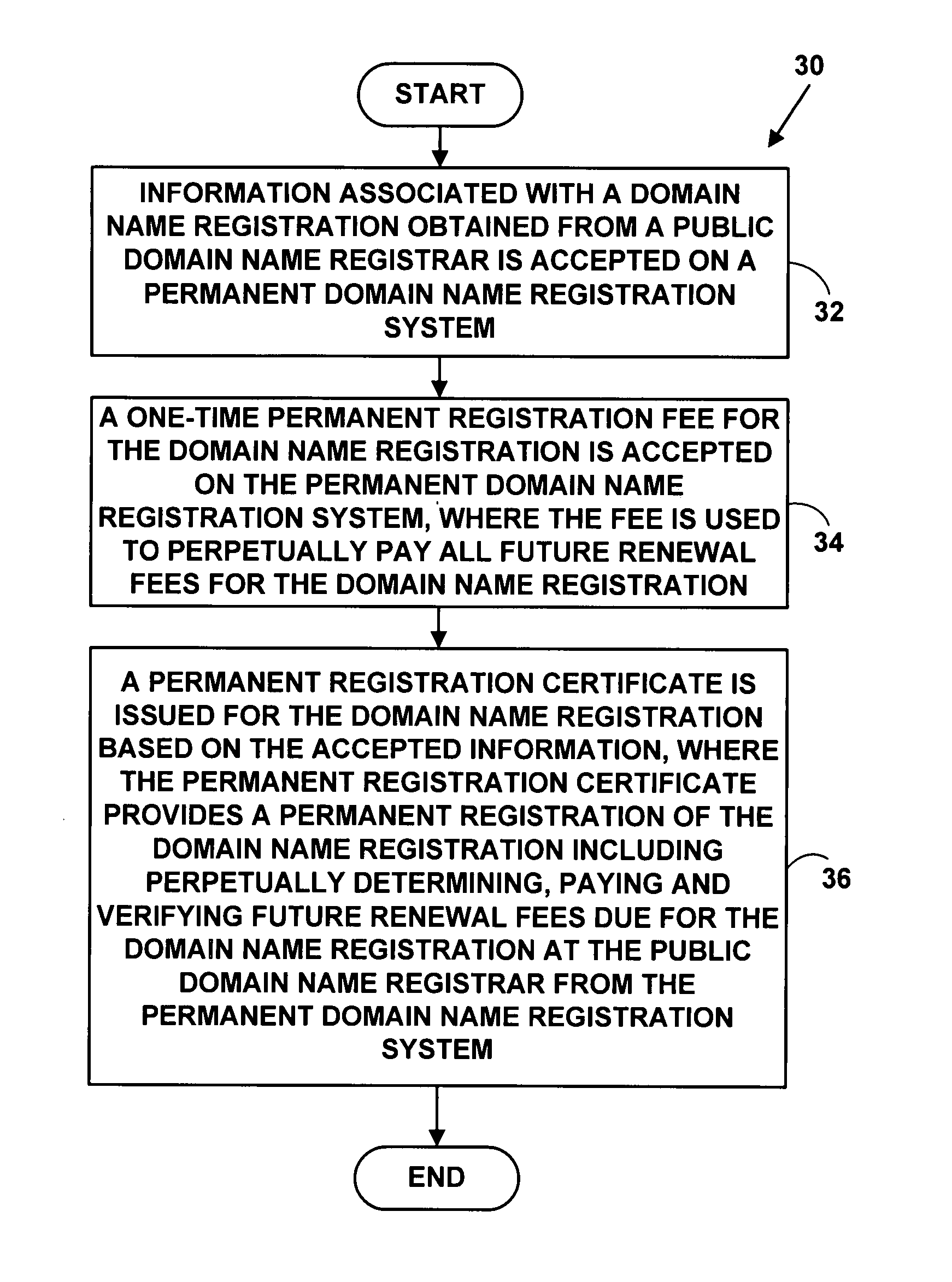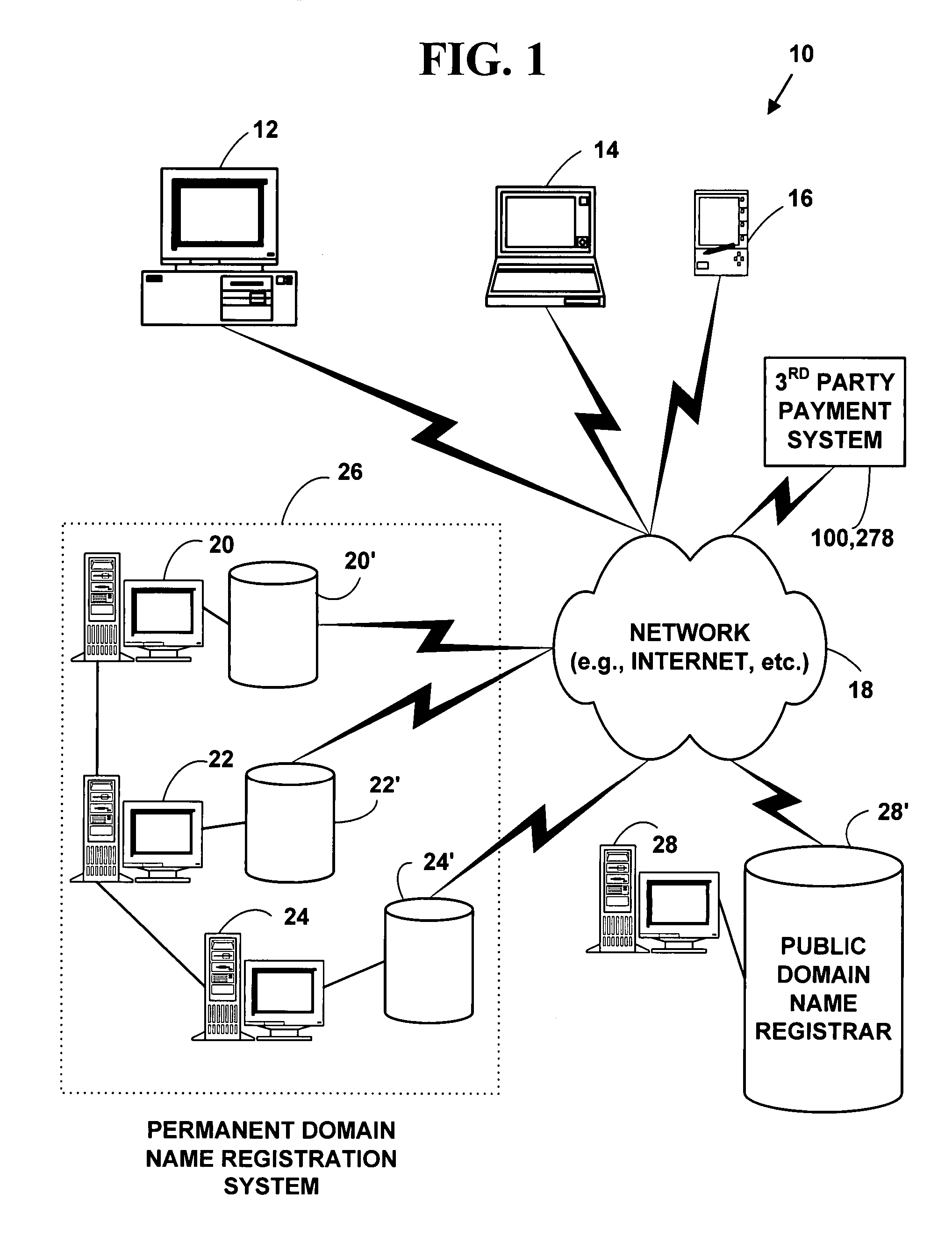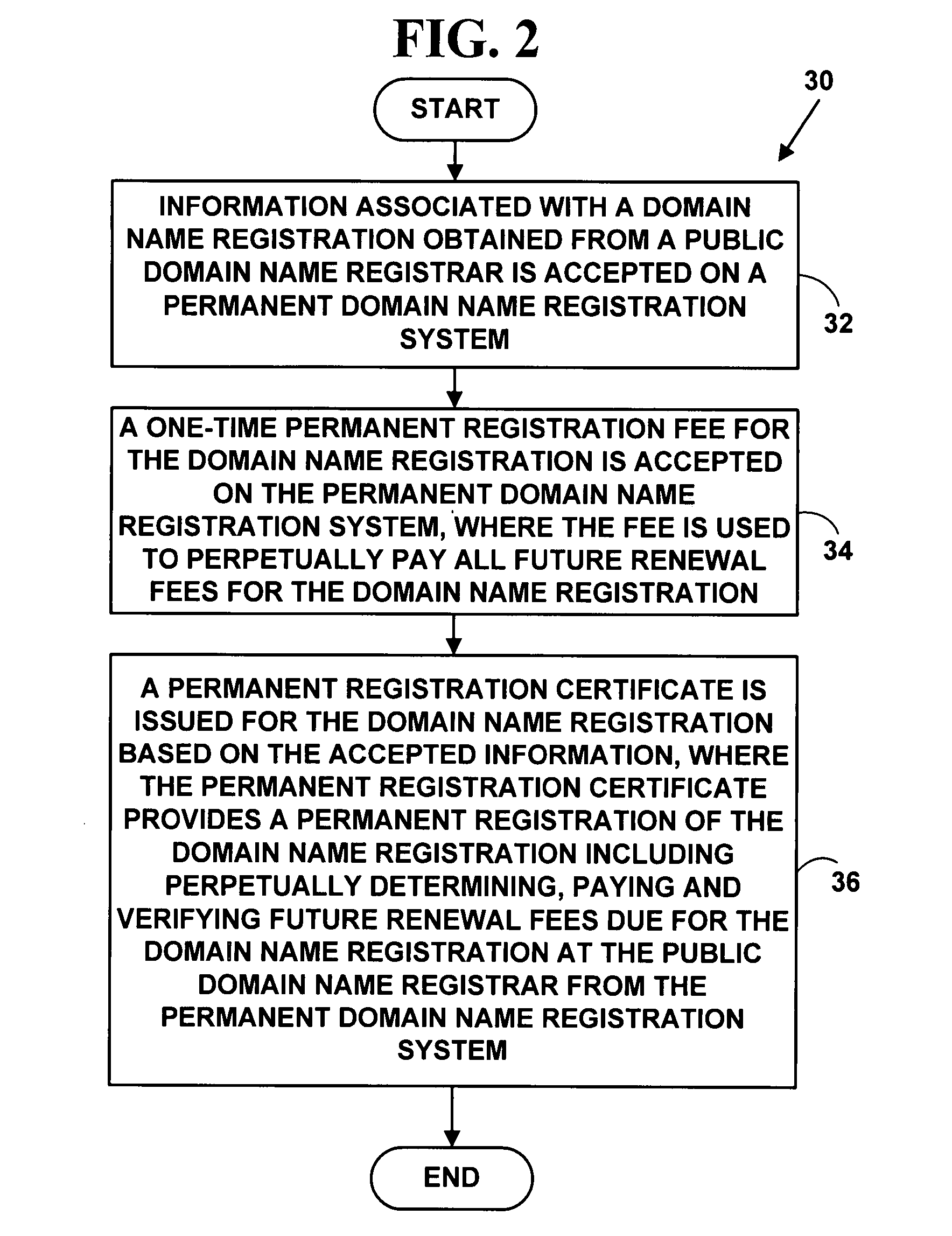Method and system for protecting domain names via third-party systems
a domain name and third-party technology, applied in the field of domain name identifiers, can solve the problems of not being able to achieve the all-or-nothing ownership of domain names, the current system of domain registration is not suitable for all-or-nothing ownership, and the cost of administrative overhead and business risk for the users of the system
- Summary
- Abstract
- Description
- Claims
- Application Information
AI Technical Summary
Benefits of technology
Problems solved by technology
Method used
Image
Examples
Embodiment Construction
Exemplary Domain Name Protection System
[0052]FIG. 1 is a block diagram illustrating an exemplary domain name protection system 10. The exemplary domain name system 10 includes one or more client network devices 12, 14, 16 (only three of which are illustrated). The client network devices 12, 14, 16 include, but are not limited to, personal computers, wireless devices, mobile phones, personal information devices, personal digital assistants, hand-held devices, network appliances, pagers, and other types of electronic devices. However, the present invention is not limited to these devices and more or fewer types of client electronic devices can also be used. The client network devices 12, 14, 16 are in communications with a computer network 18 (e.g., the Internet, intranet, etc.). The communication includes, but is not limited to, communications over a wire connected to the client network devices, wireless communications, and other types of communications.
[0053] Plural server networ...
PUM
 Login to View More
Login to View More Abstract
Description
Claims
Application Information
 Login to View More
Login to View More - R&D
- Intellectual Property
- Life Sciences
- Materials
- Tech Scout
- Unparalleled Data Quality
- Higher Quality Content
- 60% Fewer Hallucinations
Browse by: Latest US Patents, China's latest patents, Technical Efficacy Thesaurus, Application Domain, Technology Topic, Popular Technical Reports.
© 2025 PatSnap. All rights reserved.Legal|Privacy policy|Modern Slavery Act Transparency Statement|Sitemap|About US| Contact US: help@patsnap.com



